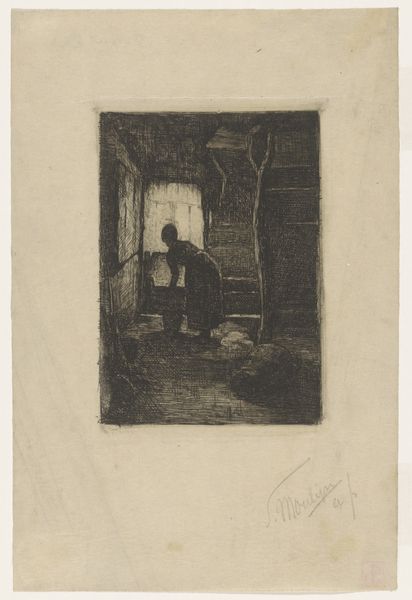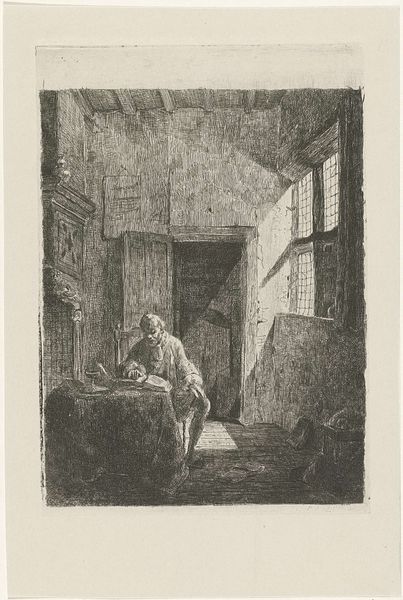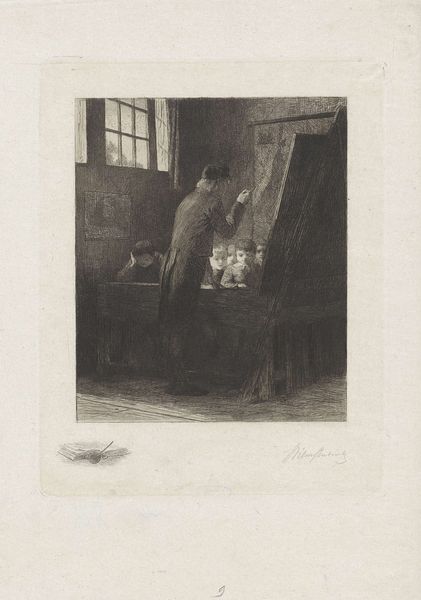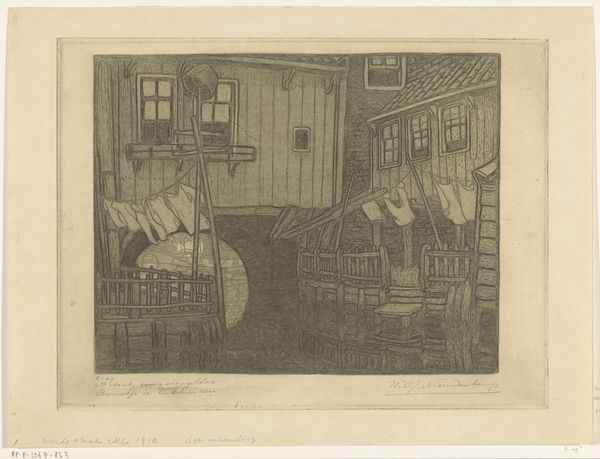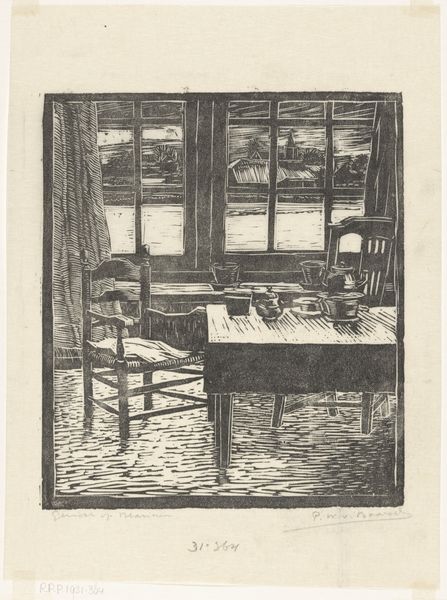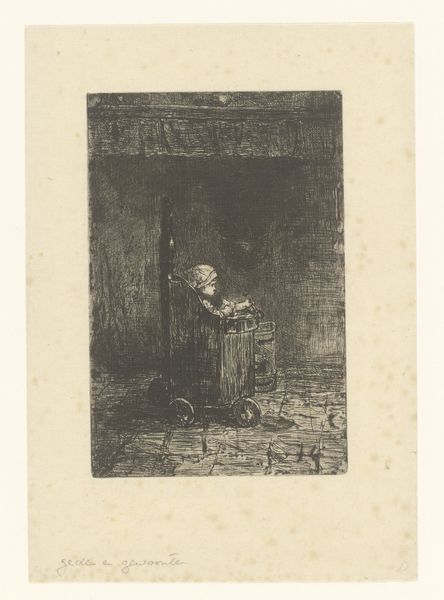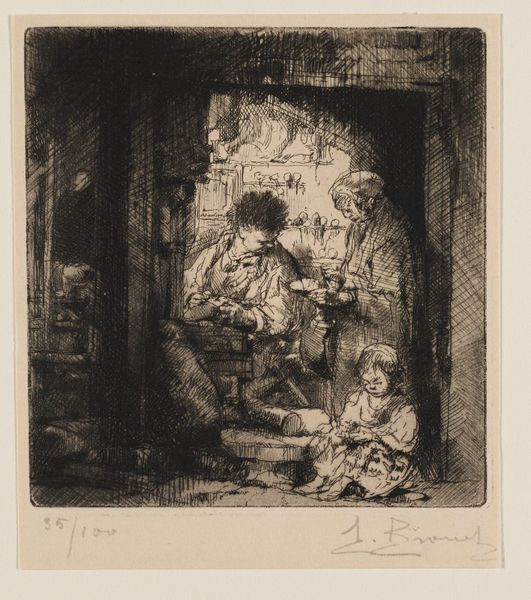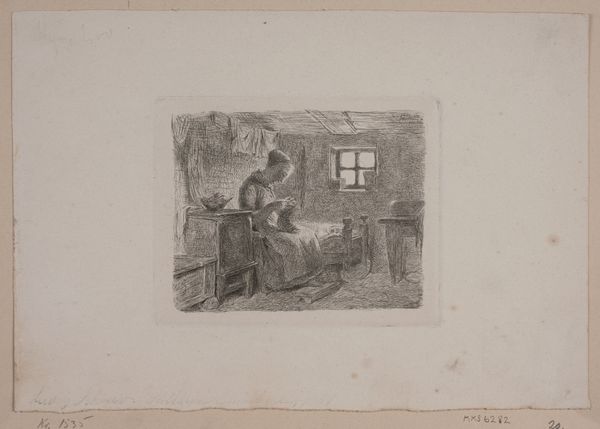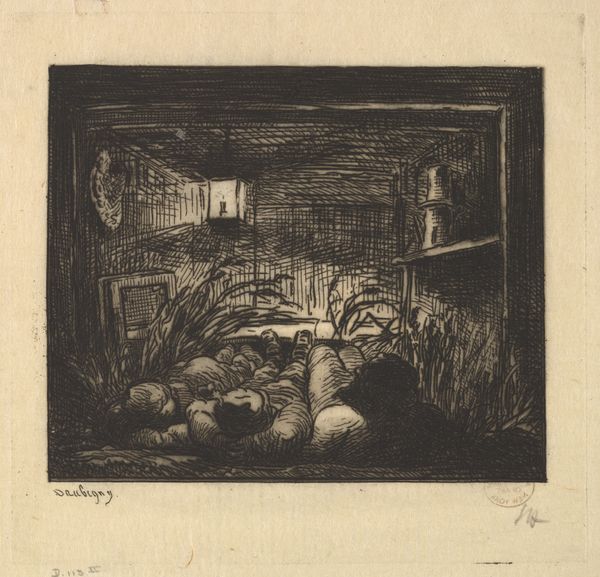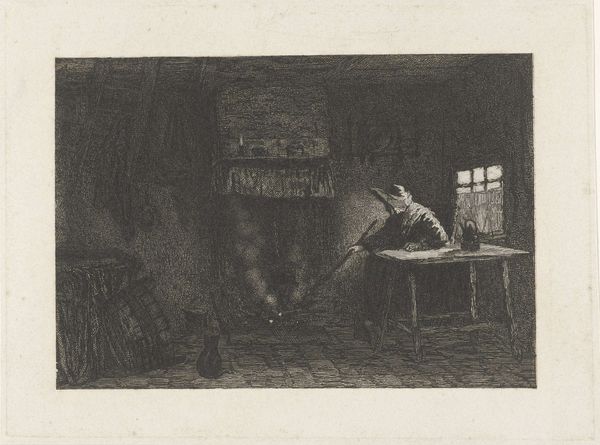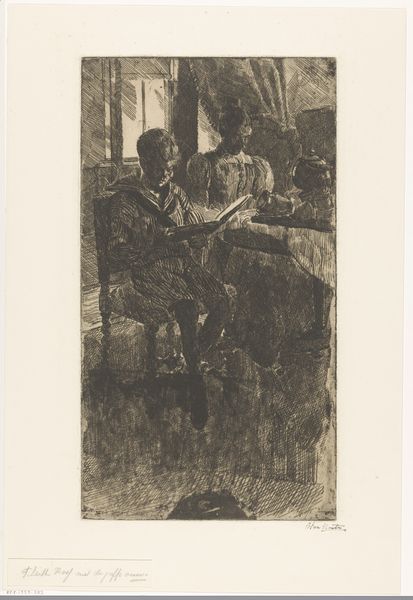
drawing, print, etching
#
portrait
#
drawing
# print
#
etching
#
genre-painting
#
history-painting
#
academic-art
#
realism
Dimensions: height 296 mm, width 253 mm
Copyright: Rijks Museum: Open Domain
Editor: This etching, "Koopman in zijn kantoor," made sometime between 1825 and 1882 by Jacobus Ludovicus Cornet, presents a somber scene. The man looks engrossed in his work, but the lighting and cluttered room create a feeling of unease. What stands out to you in terms of the painting’s historical or cultural meaning? Curator: It’s interesting you mention the "unease". Consider this: genre paintings during this period often served as visual commentaries on social roles and evolving economies. A key element is the location, the "kantoor", because we should think about the history of the modern office spaces. The piece’s historical impact comes from portraying labor and economic life—visual records which have a role in shaping cultural perception and memory. What do you observe about the subject's posture? Editor: He seems hunched over, intensely focused. Is this typical for portrayals of merchants during that time? Curator: That's perceptive. It suggests not only dedication but perhaps the burdens or pressures of commerce. The depiction also needs to be contextualized with evolving views of labor in society at the time and debates regarding productivity, for instance. Editor: I see, so the artwork is reflecting a cultural dialogue about the value—and also potentially the toll—of working and keeping a company? Curator: Exactly. The artist inserts Koopman’s everyday life into a broader narrative about work, and that can contribute to public discourse on labor. And the artist does that by creating very personal artwork and circulating prints of it, to shape perceptions, wouldn't you say? Editor: Yes, it is true. Thank you, seeing it in the context of the debates surrounding the subject’s working conditions really helped me understand it better. Curator: And reflecting on those debates and their relevance now certainly enriches the interpretation.
Comments
No comments
Be the first to comment and join the conversation on the ultimate creative platform.
